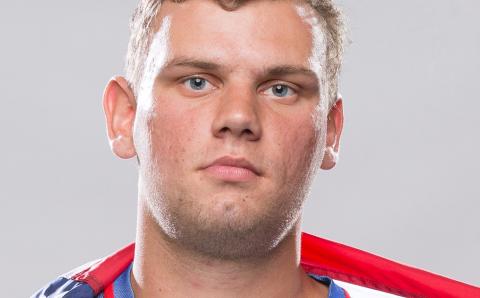Historians, nurses, and psychologists see the world from certain points of view. So do musicians, geographers, sociologists, philosophers, artists, and political scientists.
John Witvliet, director of the Calvin Institute of Christian Worship (CICW), said that often these different perspectives enable flourishing.
During his plenary talk at the “Taking Your Church to College: Strengthening Congregational Life through Liberal Arts-Style Learning” event at Calvin in June—part of the Worship Institute’s annual Vital Worship Grants Program colloquium—Witvliet used a recent family trip to Rocky Mountain National Park to illustrate his point.
A series of small signposts helped the family navigate through stunning vistas, each sign offering just a few sentences of insight provided by geologists, plant biologists, meteorologists and even poets.
“Even these short teaching notes were enough to prompt awareness, to cause us to pay attention in new ways, to open our minds and hearts to new dimensions of the wonder of the place,” Witvliet said.
And, he added, the messages were amplified, expanded, and brought to life by the teaching-oriented park rangers who also served as guides along the way.
“They are people who really care about the parks, whose enthusiasm and insight were mutually reinforcing and palpable; contagious,” said Witvliet. “These people not only taught information, they professed it.”
So too, Witvliet said, the arts and humanities, the sciences and social sciences—the liberal arts—can help churches to flourish. “This liberal arts learning experience creates a space for divergent thinking. For creativity. For imagination.”
It also creates a space for sheer wonder.
“One of the beauties of Rocky Mountain National Park is the language of testimony that echoes around every viewpoint: ‘Isn’t it amazing?’ ‘Oh wow!’ ‘I can’t take it all in,’” Witvliet said. “It is a place filled with doxological speech. Little testimonies.”
In the same way, he suggested, professors at Calvin College are guides helping people pay deep attention to different dimensions of wondrous things, “allowing us to return to God thanks and praise for all the ways God is at work—at times in spite of us.”
Event attendees were encouraged to sample the liberal arts. Here’s a signpost’s worth of information from each of the 60-minute sessions. (Note: CICW will be launching a podcast series in fall 2016 that aims to provide further education on these and many more topics.)
Promoting the Health of Urban-Dwelling Adults and Children
Nursing professor Adejoke Ayoola shared her view of what the church in community should look like: an approach to seeing and loving your community that is rooted in listening and questioning.
Based on her experience with a community-based research project she is conducting with nursing students, she has developed a passion for encouraging worshiping communities to take the initiative in assessing the needs of their community by asking, “What are the issues your neighbors and worshiping members voice? What questions can you ask, and how can you pose them so that they lead to building communities of trust, empowerment, and agency?”
She said the church in community needs first to cultivate listening ears to hear and perceive the needs of its community.
Mapping and Visualizing Your Congregation and its Community
As a scholar and professor of geography, Mark Bjelland’s fascination with physical location isn’t surprising. But in the context of church, that fascination raises challenging questions that may help to shape the future of ministry.
Is it possible that congregations across North America can better understand who they are by examining where they are? he asked. For Bjelland, this question of place is a consistent thread found throughout Scripture.
“We read in The Message translation that ‘The Word became flesh and blood and moved into the neighborhood’—and it’s true. Jesus gave a geographical framework to his own ministry, then passed that framework on to the disciples. He called them to Jerusalem, Judea, to Samaria and to the ends of the earth. I believe that literal understanding of location can help us guide our ministry today and help us fulfill Christ’s mission in our own places.”
Faithful Citizenship in a Pluralistic World
“The two things you're not supposed to talk about in polite company are religion and politics," said den Dulk. “Today we're going to talk about both.” Both, he said, contribute to a sense of identity, which is why conversations around the topics can sometimes be seen as threatening and thus are to be avoided. But to do so, he believes, is a mistake.
The church, he said, can and should be a place where people learn to trust and to tolerate. Indeed, he contended that in an age of diminishing civic engagements, the church remains one of the last places where people can learn the virtues and dispositions necessary to be good citizens.
Shiny, Happy People: The Vice of Vainglory, the Church and You
Philosophy professor Rebecca Konyndyk DeYoung unpacked “vainglory,” a vice that is embarrassingly familiar but unfamiliarly named. It means finding glory in empty things. She said its root is in pride, the source of all vice and a strong propellant to sin.
Christians can ward off this vice through practices of detachment from disordered glory-seeking, she said. Looking back to the early church fathers and mothers, “we see solitude and silence as important disciplines to cultivate and engage in.”
DeYoung said these disciplines lead to forming communities of attachment rather than detachment. “In solitude and silence, we practice being who we are in Christ when no one is watching. God develops in us capacities for creating a culture of good glory: by becoming a good audience who receives with deep gratitude the gifts God has given to us.”
How Musical Style Affects Meaning
Calvin professor of music David Fuentes believes music "tells about that which we long for and what we care about." And he takes great pleasure in Psalm 104:26: “There the ships move along, and Leviathan, which you have formed to sport in it.”
It doesn't say anything about music, he admits, but as a musician and a music professor he believes that we can praise and magnify God with our song even as the Leviathan was formed to play in the oceans.
Fuentes helped participants better understand how musical style affects meaning and the implications of that for worship. He did so by playing and getting reactions to 10 different versions of “Over the Rainbow.” By the end of his session, he had helped those in attendance better understand how, whatever the literal meaning of a song's words, the music carries one further into a world of feelings and intuition.
Faith Formation from Birth to Age 20
Psychology professor Marjorie Gunnoe said it is important for the church to understand brain development as it relates to faith formation.
Gunnoe says teachers of 2- to 6-year-olds need to focus on one or two simple themes, such as: “We are like sheep. Jesus loves sheep. That’s all for today.”
Because 7- to 11-year-olds place so much emphasis on fairness and reciprocity in their peer relationships, teachers need to work to temper this age group’s natural tendency toward a works-righteousness theology: “Unlike people, God doesn’t give us what we deserve.”
She also noted that adolescents need formal instruction in doctrine, with tests. They need to be able to articulate what they believe in their own words, which makes practices like profession of faith vitally important.
Your Brain on Arts
While we may understand the differences between the left brain and the right brain, it’s the integration of the whole brain that leads to knowledge. For instance, experiencing a work of art is much more powerful if we know the history behind it. Calvin art professor Jo-Ann Van Reeuwyk challenged attendees to think in such terms.
“Brain science informs us that the arts are needed for complete learning and comprehension,” said Van Reeuwyk. “Well before the science, worshipers have recognized the power of the arts.
“We now know why deep understanding and conviction are developed when multisensory aspects are incorporated in worship services. We can build on this knowledge for deeply impactful praise and offering.”
The Dramatic Story of the National Baptist Hymnal
Eric Washington, professor of history, showed how case studies can help people gain perspective and rethink ministry. Through a brief history of Southern Baptist and African American Baptist traditions in the U.S., Washington explored the history of the National Baptist Convention through the work of Richard Henry Boyd.
Boyd, a former slave, advocated for and created church materials that served African-American congregants. He published the National Baptist Hymn Book, a collection of hymns popular in African American Baptist churches. The hymn book was Boyd’s attempt to regularize African American Baptist worship and to promote literacy in country churches. Today, the hymn book is considered a primary source of National Baptist theology.
When a Picture is Worth 1000 Words
How do you examine the effectiveness of your church’s programs? Sociology professor Roman Williams believes the best place to start is with a cell phone—or, more specifically, a cell phone camera.
Williams leads congregational study groups focused on visual feedback. Through crowd-sourced cell phone photography, he facilitates discussions that can help churches more honestly and accurately evaluate their ministry work.
“This kind of visual evaluation offers permission to start conversations we don’t often like to start. It allows people to have a voice where they may not otherwise speak—and we need to hear those voices within our congregations,” said Williams. “The visual narrative creates a new avenue for expression and helps uncover truths we might miss.”
About the Author
Matt Kucinski is media relations manager at Calvin University.









